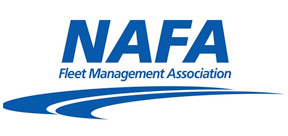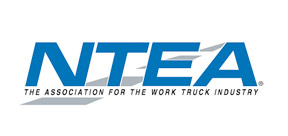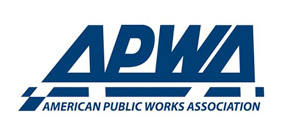Smart water management transforms Sandy, Ore., operations and cuts water loss by over 30%
By Malay Patel, Senior Manager, Capital Projects for Mueller Water Products
Sandy, Ore., may be a small city with just 4,200 water service connections, but it faces the same challenges as much larger municipalities: aging infrastructure, limited staffing and the need to minimize costly water loss. With only 10 staff members, including just two field technicians, finding efficiencies and reducing water loss is top of mind.
Smart metering infrastructure
Joe Johanesen, water supervisor for the city, knows that you can’t manage what you can’t measure. To address this, the city upgraded to Mueller Solid State Registers (SSR) with a complete AMI network with five collectors and six repeaters.
Johanesen said, “Prior to installing the AMI system, meter reading was a very manual process, costing the city $3,000 a month for a meter reader to read half the service area. The AMI installation has saved the city money, which has been used to help absorb network and maintenance costs.”
The system provides daily meter reads versus monthly and allows remote readings in hard-to-access areas. The city can also set water-use limits for high-usage connections.
In 2024, the city launched a smart city initiative. Building on the success of its AMI program, the city started a new project to quantify water loss, identify and repair leaks, and optimize pressure management. This systematic approach would allow the city to target critical water loss areas and quantify the results and savings.
Initial assessment and monitoring deployment
By isolating one of its pressure zones, the city used a combination of the insertion meters in the new Singer® PRVs and the i2O® pressure loggers to determine the volume of water going into the zone, less the consumption measured from the AMI meters and found approximately 33% water loss in this pressure zone.
By adding the EchoShore®-DX fixed leak monitoring technology, the city could locate a leak of 7 gallons per minute — amounting to an average water loss of 15% — in that district metered area (DMA). The technology incorporates the use of acoustic monitors, which are installed in fire hydrant caps throughout the system. The sensors then record data, listening for sounds of potential leaks. That data is then uploaded to the Sentryx™ Water Intelligence platform, a cloud-based program where it can be analyzed by utility staff to identify points of interest. The sensors can identify acoustical noises emitted by leaks before they become detectable by conventional methods.
Targeted Leak Detection and System Repairs
With this baseline established, Echologics® installed more sensors to identify water loss across the neighborhood. Johanesen said, “The sensor nodes are super simple to install and deploy. The technology identifies the exact leak location, making excavation and repair much easier and less costly.”
The quick repair of the 7.85 gallon per minute leak saved over 4,000,000 gallons of water annually from seeping into the ground, amounting to roughly $33,000 saved annually in unbilled water.
EchoShore-DX also has a history tracker component, which uses an algorithm to automatically check for a correlation of leaks at specific locations that have a leak history. “Whether it’s a hole in a copper or a poly line, or a crack in a water main that might not be surfacing, that’s really what we’re looking for — the unknowns, such as a bell joint leaking a little bit off a water main,” commented Johanesen.
Advanced Pressure Optimization
In addition to leak monitoring, the city identified a critical pressure monitoring zone — Zone 4 — and installed five i2O pressure loggers to help track pressure reduction efforts at various elevations throughout the DMA. i2O’s dedicated patent-protected pilot valve and system control algorithms are designed to optimize network pressure without triggering burst-causing transients to the network.
The city also installed two pressure control valves with built-in insertion meters from Singer. The 6-inch and 10-inch S106-PG Single Rolling Diaphragm Valves feed the pressure zone from two entries. They work together to control the pressure and offer the redundancy of being able to adjust the pressure levels from both sites or remotely.
“Having the EchoShore out there to listen and having the pressure control to lower the pressure in the zone is very beneficial,” Johanesen added. “You can still have enough pressure overnight and relieve the pressure in the system, lessening the burden on the pipes. Or, during those low-demand periods, even if there are active leaks, you can still keep the pressure low to lessen the loss.”
i2O pressure loggers and advanced pilot valves reduced water loss by another 11 gallons per minute. Johanesen estimates that water loss has reduced from about 22% down to about 18% to 19% just from the one DMA being addressed.
Streamlined operations through data intelligence
The new technology has streamlined daily operations. Of the approximately 20 daily meter alerts, half are now immediately eliminated because staff understand the flow patterns. One staff member reviews alerts for points of interest, saving time and resources.
“Being able to use the technology to troubleshoot a lot of this stuff saves time driving around and going into people’s yards to investigate,” said Johanesen. “I think we proved it to ourselves and our director that these are legitimate and good, working products. We can now start including more technology into the budget so we can roll out another pressure zone.”
Through integrated water management technologies, Sandy has achieved remarkable results: significant water loss reduction, streamlined operations and substantial cost savings — creating a compelling blueprint for other small utilities.
Next Article: Boise offers Youth Firesetting Intervention Program





